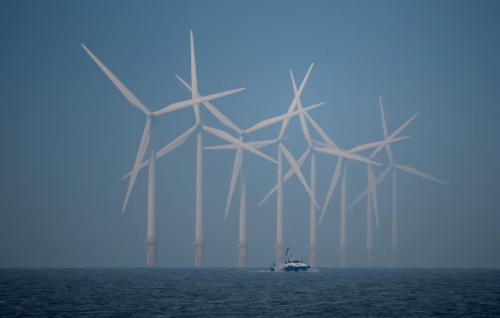Carbon Border Taxes: Profiting from the New Trade Barrier

In recent years, the pace of global climate governance has continued to accelerate, with carbon emissions evolving from a purely environmental concern into a major factor influencing international trade. Against this backdrop, the concept of the Carbon Border Tax has emerged and is gradually becoming reality. While its stated intention is to promote global emissions reduction in the name of environmental protection, the underlying dynamics of trade competition, policy favoritism, and its far-reaching impact on developing countries have already transcended environmental issues alone.
What Is a Carbon Border Tax?
Put simply, a carbon border tax refers to an additional charge imposed on imported goods from countries or regions with less stringent carbon emission standards. The mechanism essentially extends strict domestic emission regulations abroad, aiming to prevent local industries from losing competitiveness due to higher environmental costs.
First proposed by France in 2007 as a way to penalize countries failing to meet commitments under the Kyoto Protocol, the idea has regained traction as climate policy becomes central in Europe and the U.S. In 2023, the European Union officially passed the Carbon Border Adjustment Mechanism (CBAM), scheduled for full implementation in 2026, with a transition period beginning in October 2023. The U.S. is also moving forward with its own version—the Clean Competition Act (CCA)—slated to start in 2024.
From Climate Governance to Green Trade Barriers
Although the carbon border tax is presented as a tool for advancing global carbon reduction, in practice it acts as a new form of green trade barrier. Once implemented, this system could disrupt current global trade norms and climate governance mechanisms. Developing countries—especially those dependent on exports and dominated by carbon-intensive industries—are likely to bear the brunt.
High carbon tariffs will erode the competitiveness of developing-world enterprises in EU and U.S. markets. Many of these businesses may be forced out of international supply chains due to their inability to absorb the added costs or comply with complex regulations, ultimately hampering economic development and employment.
Meanwhile, developed countries stand to gain on two fronts: they can shield domestic industries from foreign competition, and at the same time, export clean energy technologies and low-carbon solutions using their capital and technical advantages—reaping the rewards of the green transition while gaining more global influence.
Policy Loosening: A Window of Opportunity
Interestingly, despite the aggressive rollout of carbon border taxes, the EU has recently acknowledged the practical challenges of implementation. Data show that while the largest carbon emitters make up less than 20% of total importers, they account for over 95% of imported emissions. This means that in order to regulate just 5% of emissions, the EU would be burdening 80% of small importers with costly compliance—a massive administrative burden.
To improve execution, the EU has decided to reform the CBAM framework: around 80% of small and medium-sized importers will be exempted from the carbon tariff mechanism, shifting enforcement focus to the top 20% of major emitters. This adjustment offers SMEs much-needed relief and provides a “buffer period” for green transformation.
This window presents a rare opportunity for SMEs. If they can use this time to upgrade technologies and build greener supply chains, they may be well-positioned when regulations tighten again—and might even benefit from the new rules.
How Can Companies Turn the Carbon Threat into an Opportunity?
At its core, the carbon border tax internalizes the external cost of emissions. This means a product’s carbon footprint during production directly affects its export cost. To survive—and even thrive—under the new rules, companies must commit to carbon management strategies, such as:
- Upgrading production processes to reduce energy waste and adopt energy-efficient equipment;
- Greening supply chains by sourcing low-emission materials and optimizing logistics;
- Shifting to clean energy and reducing dependence on high-carbon sources like coal;
- Digitalizing carbon management by building traceable and transparent carbon accounting systems.
Moreover, the CBAM framework includes provisions that allow for deductions if the product has already incurred carbon costs in its country of origin. This means that if an exporting country implements its own carbon pricing (such as carbon taxes or a trading system), it could help its industries gain smoother market access and encourage a broader green transition.
At the National Level: Policy Support Is Essential
To address the challenges of carbon border taxes, national policy responses are crucial. Governments should guide enterprises toward lower emissions by offering transition funds, green financing, and tax incentives to support industrial transformation.
Additionally, there should be increased support for green certification and carbon labeling systems to help exporters meet EU and U.S. standards. Negotiating unified carbon standards with major trading partners could also ensure a more level playing field.
Finally, export markets should be diversified to reduce overreliance on a single region. Collaborating with other developing countries on low-carbon projects and exploring emerging markets may offer viable strategies for navigating these new trade barriers.
In the Carbon Era, the Winners Are Not the Strongest—But the Greenest
Though the carbon border tax may appear threatening, it ultimately reflects the accelerating march toward global carbon neutrality. In this systemic shift, those who can lead in green transformation and seize control of the sustainability narrative will likely gain the upper hand in the next round of international competition.
For companies, whether they choose to react passively or proactively leverage the carbon trend will determine their future place in the global market. For nations, the ability to guide industries through transformation and build green competitiveness will be key to reshaping the global trade landscape.



